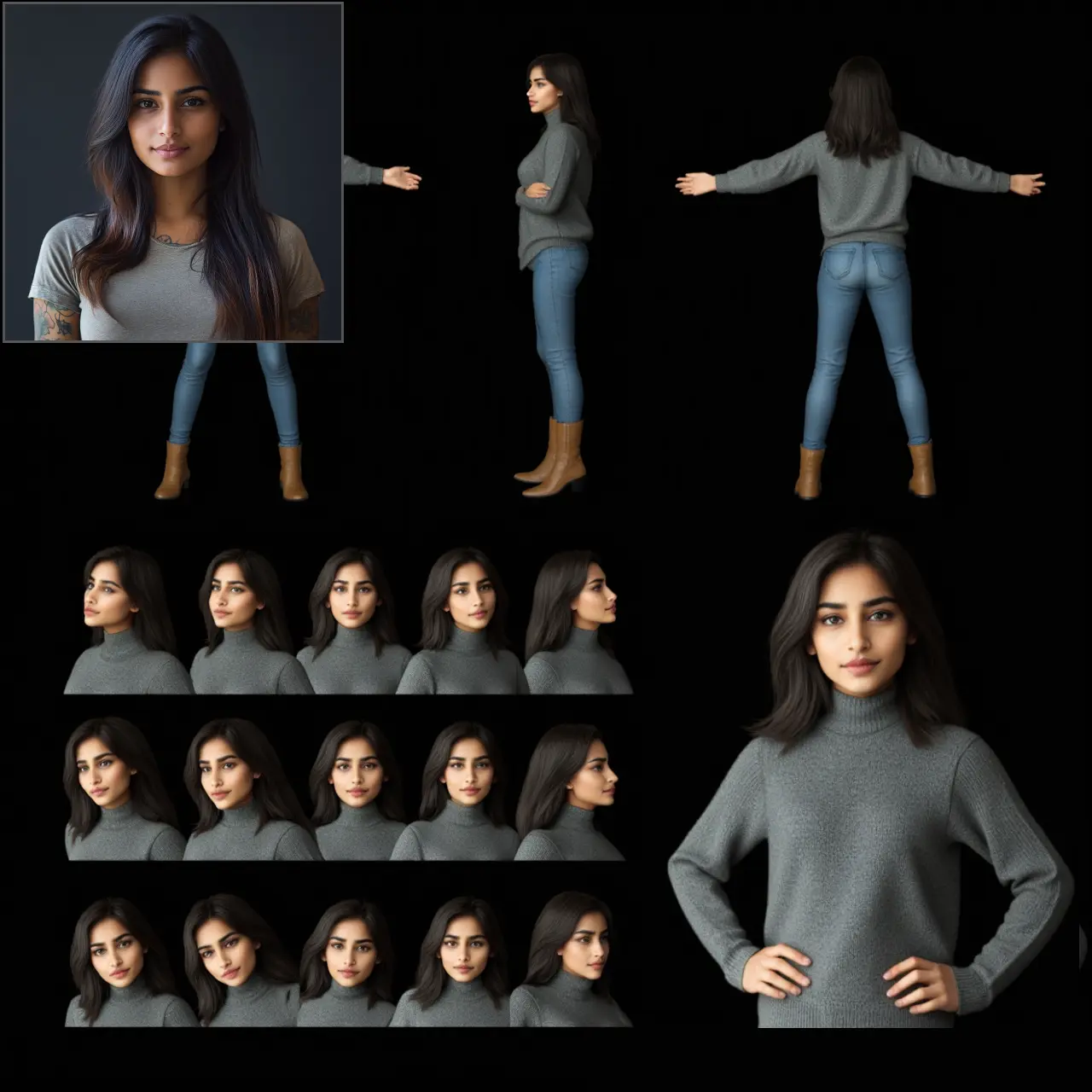ComfyUI Node: 🔢 CR Interpolate Latents
CR Interpolate Latents
Category🧩 Comfyroll Studio/🎥 Animation/🔢 Interpolate
Suzie1 (Account age: 2434days) Extension
Comfyroll Studio Latest Updated
2024-07-24 Github Stars
0.83K
How to Install Comfyroll Studio
Install this extension via the ComfyUI Manager by searching for Comfyroll Studio- 1. Click the Manager button in the main menu
- 2. Select Custom Nodes Manager button
- 3. Enter Comfyroll Studio in the search bar
Visit ComfyUI Online for ready-to-use ComfyUI environment
- Free trial available
- 16GB VRAM to 80GB VRAM GPU machines
- 400+ preloaded models/nodes
- Freedom to upload custom models/nodes
- 200+ ready-to-run workflows
- 100% private workspace with up to 200GB storage
- Dedicated Support
🔢 CR Interpolate Latents Description
Blend latent samples for smooth transitions, supports lerp and slerp interpolation methods.
🔢 CR Interpolate Latents:
The CR Interpolate Latents node is designed to blend two sets of latent samples, allowing you to create smooth transitions between different latent representations. This node is particularly useful for AI artists who want to generate intermediate states between two latent vectors, enabling the creation of animations or morphing effects. The node supports both linear interpolation (lerp) and spherical linear interpolation (slerp), providing flexibility in how the blending is performed. By adjusting the interpolation method and weight, you can control the influence of each latent sample on the final output, making it a powerful tool for creative experimentation in latent space.
🔢 CR Interpolate Latents Input Parameters:
samples1
This parameter represents the first set of latent samples to be interpolated. It is a required input and should be of type LATENT. The latent samples are essentially high-dimensional vectors that encode information about the data, and in this context, they are used as the starting point for the interpolation.
samples2
This parameter represents the second set of latent samples to be interpolated. Like samples1, it is a required input and should be of type LATENT. These latent samples serve as the endpoint for the interpolation, and the node will blend between samples1 and samples2 based on the specified ratio.
ratio
The ratio parameter is a floating-point value that determines the weight of the interpolation between samples1 and samples2. It has a default value of 1.0, a minimum value of 0.0, and a maximum value of 1.0, with a step size of 0.01. A ratio of 0.0 means the output will be entirely samples1, while a ratio of 1.0 means the output will be entirely samples2. Intermediate values will blend the two sets of samples proportionally.
method
This parameter specifies the interpolation method to be used. It can take the values lerp for linear interpolation or slerp for spherical linear interpolation. The choice of method affects how the blending is performed: lerp provides a straightforward linear blend, while slerp takes into account the geometric properties of the latent space, resulting in a more natural interpolation for certain types of data.
🔢 CR Interpolate Latents Output Parameters:
samples
The output parameter samples is of type LATENT and contains the interpolated latent samples. This output represents the blended state between samples1 and samples2 based on the specified ratio and interpolation method. The resulting latent samples can be used for further processing or visualization, allowing you to explore the intermediate states between two latent vectors.
show_help
This output provides a URL to the help documentation for the node. It is a string that directs you to additional resources and examples on how to use the CR Interpolate Latents node effectively. This can be particularly useful for new users who want to understand the node's capabilities and see practical use cases.
🔢 CR Interpolate Latents Usage Tips:
- Experiment with different
ratiovalues to see how the interpolation affects the output. Small changes in the ratio can produce significantly different results. - Use
slerpfor more natural transitions in high-dimensional latent spaces, especially when working with data that has complex geometric properties. - Combine this node with other latent manipulation nodes to create more complex transformations and effects.
🔢 CR Interpolate Latents Common Errors and Solutions:
Mismatched latent dimensions
- Explanation: The dimensions of
samples1andsamples2do not match, causing an error during interpolation. - Solution: Ensure that both sets of latent samples have the same dimensions before passing them to the node. You can use a reshaping function if necessary.
Invalid ratio value
- Explanation: The
ratioparameter is set to a value outside the allowed range (0.0 to 1.0). - Solution: Adjust the
ratioparameter to be within the valid range. The value should be between 0.0 and 1.0, inclusive.
Unsupported interpolation method
- Explanation: The
methodparameter is set to a value other thanlerporslerp. - Solution: Ensure that the
methodparameter is set to eitherlerporslerp. Any other value will result in an error.
🔢 CR Interpolate Latents Related Nodes
RunComfy is the premier ComfyUI platform, offering ComfyUI online environment and services, along with ComfyUI workflows featuring stunning visuals. RunComfy also provides AI Playground, enabling artists to harness the latest AI tools to create incredible art.


